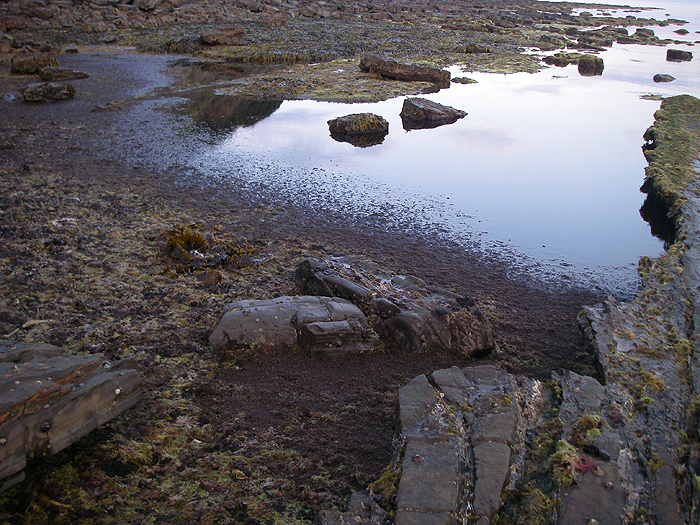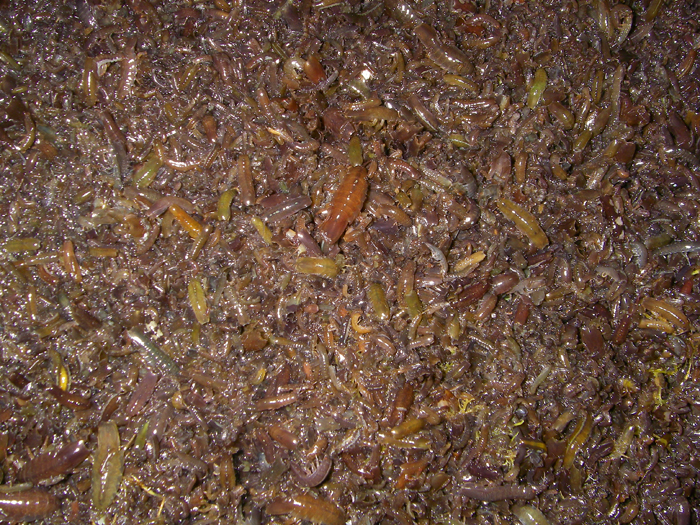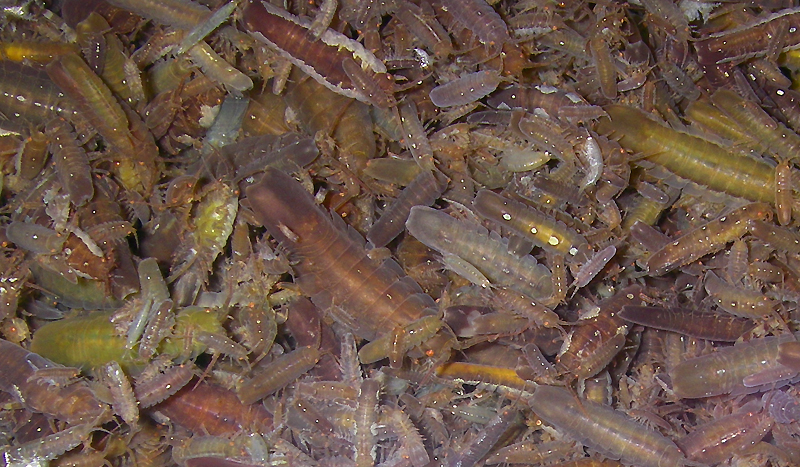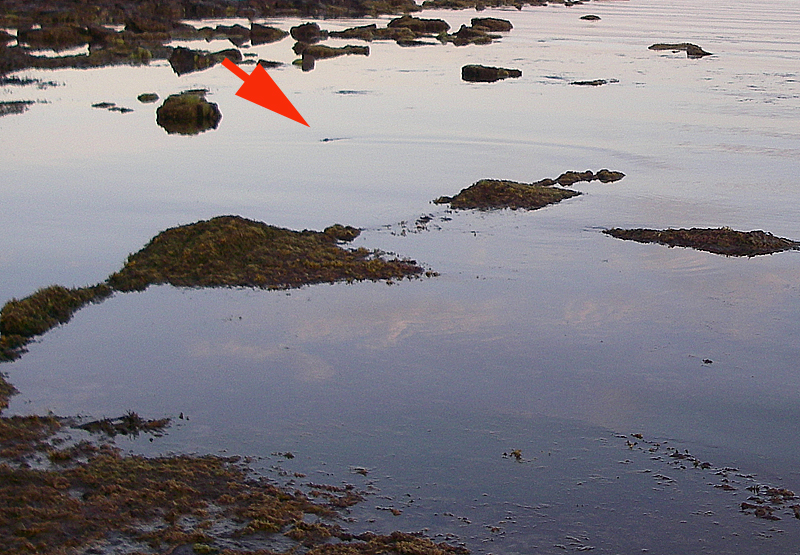

Catch Fish with
Mike Ladle
Information Page
SEA FISHING
For anyone unfamiliar with the site always check the FRESHWATER, SALTWATER and TACK-TICS pages. The Saltwater page now extends back as a record of over several years of (mostly) sea fishing and may be a useful guide as to when to fish. The Freshwater stuff is also up to date now. I keep adding to both. These pages are effectively my diary and the latest will usually be about fishing in the previous day or two. As you see I also add the odd piece from my friends and correspondents if I've not been doing much. The Tactics pages which are chiefly 'how I do it' plus a bit of science are also updated regularly and (I think) worth a read (the earlier ones are mostly tackle and 'how to do it' stuff).
Bass banquet!
I rarely write about unsuccessful fishing trips because I assume that most anglers have little interest in NOT catching fish. However, one key fact about all fishing is that you must be 'In the right place at the right time'. The trick, of course, is to decide exactly where the 'right place' is? There are lots of things which are 'common knowledge' so sea angling authors will all urge you to 'Have a good look at the shore when the tide is out,' 'Watch out for feeding seabirds,' 'Fish at dawn and dusk,' and so on. All these bits of good advice are fine in their way but they all boil down to one thing - YOU SHOULD FISH WHERE THERE IS A HIGH CONCENTRATION OF FISH FOOD 'cos that's where the fish will be..' Secondly, there's also the essential follow up tip - 'USE A BAIT OR LURE RESEMBLING THE NATURAL FOOD!'
Now we all know what bass eat don't we? Fish, crabs and prawns are high on the menu for Mr and Mrs labrax. Sadly this information doesn't take us much further forward when it comes to locating our quarry because in some shape or form these animals are more or less abundant all around our coastline. There may be times and places when there are more of them than others, such as the early season sandeel shoals over tide races or the seasonal peel of shore crabs in stony, muddy estuaries but even these events are a bit uncertain and can be tricky to detect. There are, however, one or two items of 'bass caviar' which can be spotted by anyone and are absolutely guaranteed to attract our favourite fish in numbers. I came across a fine example this morning and managed to take a couple of pictures. I think it's well worth describing what I saw as it really is so striking.
I was intent on bait fishing so armed with my 9'9" Popping rod, Stradic reel loaded with 30lb Whiplash and a size 8/0 circle hook baited with a mackerel fillet I was on the shore at low water. I thought it was a little too early to start fishing so I walked along the rocks with my eyes open for signs of fish. The sea was flat calm and gin clear NOT, you might think, ideal conditions for tempting a bass on bait. Anyway there's always something to be learned from a quiet stroll so I was happy to have a good look while I waited for the tide to start making. To be honest I knew exactly what I was looking for as I've encountered it many times before. I reached a spot where a small bay in the flat rocks had accumulated lots of loose weed - what I refer to as 'salad'. Now what is certain is that Idotea love salad, in fact they love rotten salad. Long before I arrived at the bay I could smell the rotting weed and, as I approached I could see that the water close in was not only full of weed and stinking but black with the products of decay.
"Not ideal!" You might think. (1) Unfishable because of weed. (2) No good for the fish because the decaying algae had used up all the oxygen. But wait a minute. Even with my ageing eyesight I could see that in the edge of the sea was a seething mass of life, in fact there was a ten centimetre thick layer of creeping, writhing marine woodlice Idotea - caviar for bass. These little creepy packs of protein are so numerous that the fish simply have to hoover them up by the mouthfull. Experience has shown that bass never pass up the chance of a feed on these tasty crustaceans. All I had to do was wait for the fish to arrive with the incoming tide.
My problem, I knew, would be how to tempt fish which would be preoccupied with eating Idotea 'soup'. This is never easy and, since I only had my bait fishing gear with me, my options were severely limited. Had I been prepared I might have tried a gently wriggling, weedless, soft plastic on the spinning gear - it occasionally works. Another option might have been to fish an imitation 'wood louse' on the fly tackle, although my artificial would have been only one of the uncountable millions. Anyway, I couldn't resist having a go so I lobbed the bait a few metres out onto a clear area of flat rock alongside the little weedy bay and waited - and waited - and waited.
You've got the message. Nothing happened. After half-an-hour my patience was running out. Most of the fish were cruising in the stinking water, clearly they were tempted by the dense concentration of food but if I cast there surely my bait would immediately be buried in Idotea? Well "Nothing ventured nothing gained!" So I flicked the bait onto the heaving carpet of crustaceans and I could see the silver flash as it lay there. Within ten seconds it was picked up by a cruising bass of three or four pounds and the line began to stream out. The fish left the bay and headed away across the flat rocks. I closed the bale arm, the line tightened, the rod began to bend then---- nothing. I reeled in. The bait was still there so I flicked it into the bay again. This time it was buried in woodlice and I had no more bites. Ah well, that's fishing!
This is my advert for the book I wrote with Steve Pitts - just in case. Even if you don’t buy “The Second Wave” yourself – please tell your facebook, twitter, email, friends about its existence. As I’ve said IT'S AVAILABLE ON PAPER OR FOR YOUR KINDLE FROM -
If you have any comments or questions about fish, methods, tactics or 'what have you!' get in touch with me by sending an E-MAIL to - docladle@hotmail.com
The dotty 'stuff' in the edge is solid Idotea.

When they're high and dry they look like this.

As the tide comes in and they start to swim they're more at home. Note the massive variation in colour and size.

Here's a decent bass mopping up a stomach full of crustaceans on the first of the flood tide.
